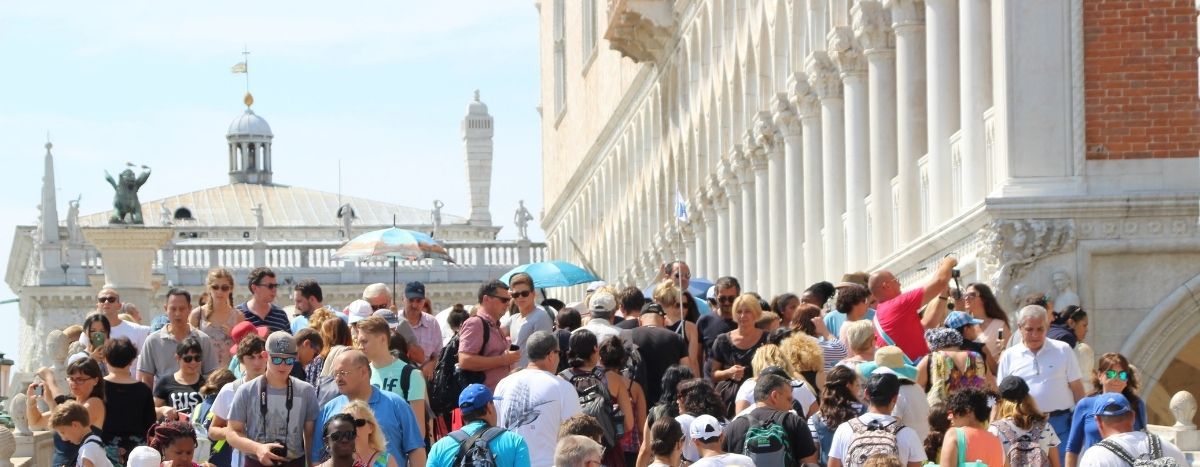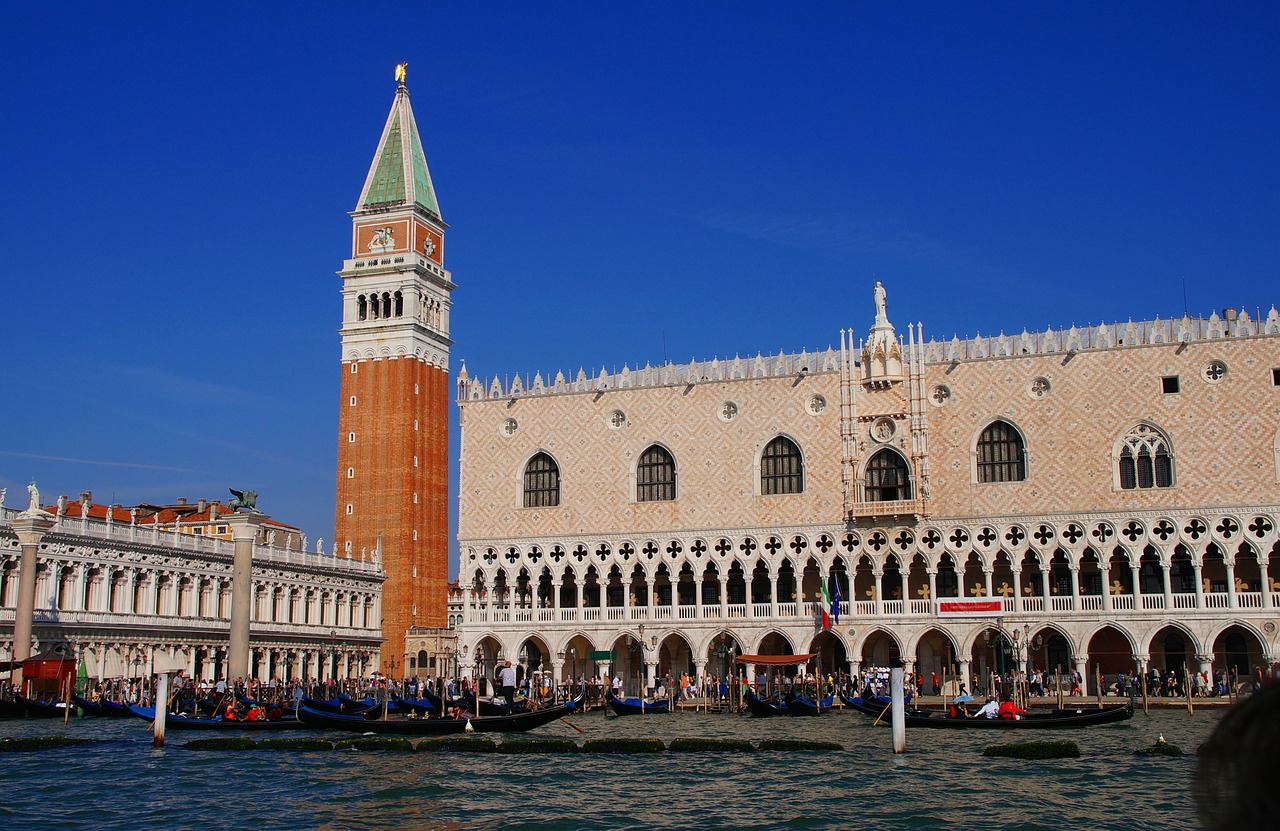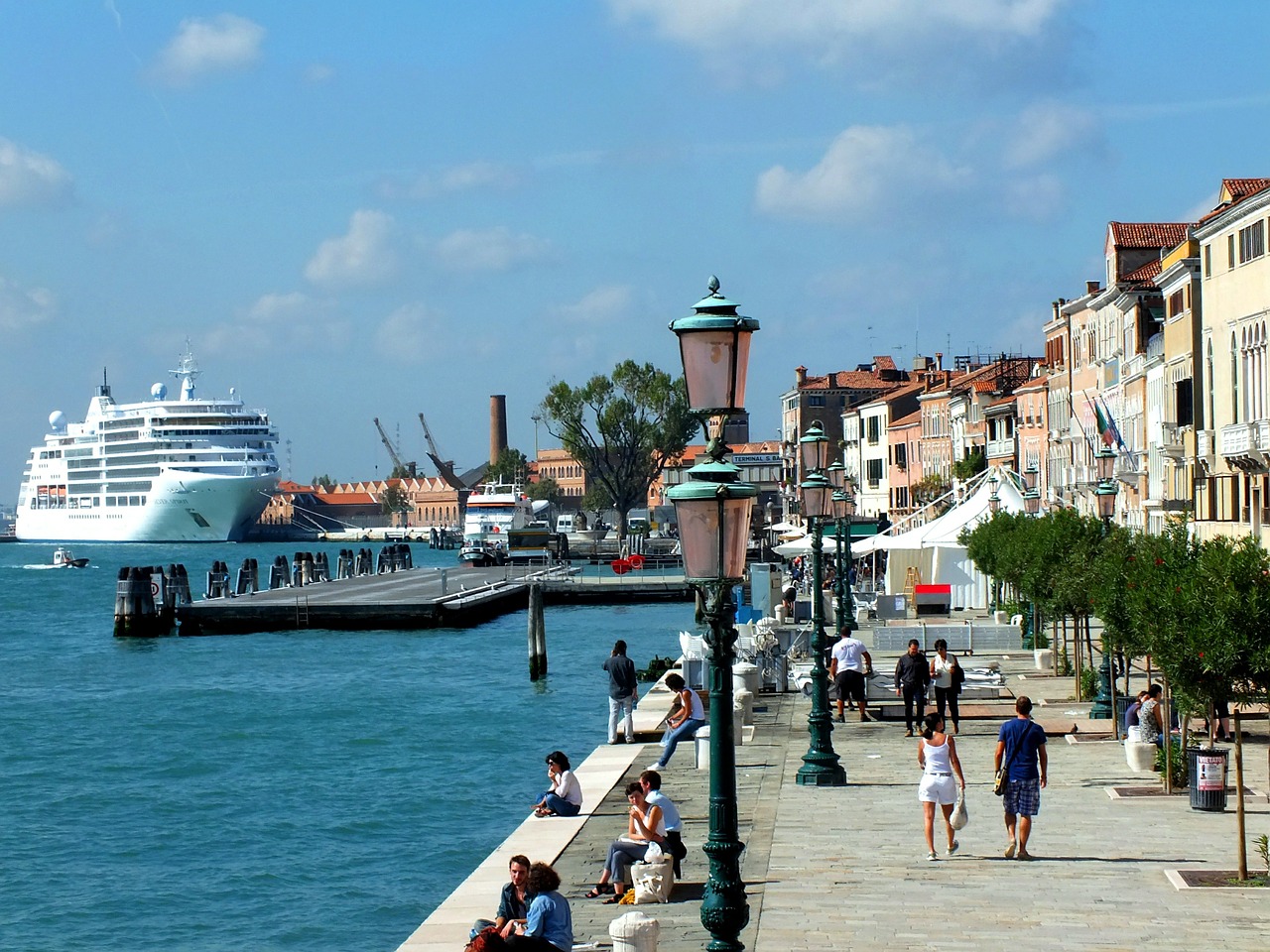
Venice: towards a critique of the tourist economy
Published on
Translation by:
 Jamie Mackay
Jamie Mackay
Venice is one of the most beloved tourist destinations in the world. Yet beyond the idealised images of gondolas and renaissance palazzi there are other dynamics at work, from the depopulation of the centre to the struggles of residents to construct a fairer, more inclusive community. QCode magazine spoke to Giacomo-Maria Salerno, author of a new book about the long history of these issues. This is an edited version of the conversation.
A historic city. A romantic city. The city of the carnival and luxury shopping. Venice is the tourist destination par excellence; a destination millions of tourists around the world literally dream of visiting. But it is, at the same time, the most overt example of how mass tourism can burden a city, tearing its socio-economic fabric apart while causing costly environmental damage.
In his latest book the researcher Giacomo-Maria Salerno analyses the close links between tourism and neoliberalism, exploring how cities become places for consuming transient experiences, usually at the expense of individuals who, lacking in income, are forced out to the suburbs against their will. Salerno illustrates and dissects these phenomena, describing the tourist history of Venice from the past to the present moment. The current pandemic in no way belittles the importance of his reflections. On the contrary - as the author states in the prologue - Covid-19 serves as a tool for understanding various aspects of the ongoing socio-economic crisis.
The origins of the "problem of Venice"
Criticisms and protests against the tourist economy in Venice have been around for decades. In the book you cite a wonderful documentary by Guido Vianello The City. The film was released in 1974, yet the problem of the 'tourist monoculture' was already being clearly posed, as a counterpoint to the industrial zone of nearby Marghera.
Venice's distinctive tourism sector has its origins in the 18th century, with the Grand Tour [the cultural itinerary of the era's young aristocrats] and the glories of the carnival. Even at this early stage, the so-called 'foreigner economy' was, apparently, a significant factor in the city's disastrous decline, and these are the foundations of what will later become known as 'the problem of Venice.'
Then, at the start of the 20th Century, Giuseppe Volpi and Piero Foscari laid the foundations for an industrial 'Fordist' Venice, which was supposed to free the city from "venal moonshine of furnished rooms" – as the futurist Filippo Tommaso Marinetti wrote in those years. At the same time a first form of zoning was introduced in which productive activity was concentrated on the mainland, while tourism was reinforced in the city centre and on the Lido, which was the main beach resort in those years.
The development of Marghera and Mestre, as part of what came to be called the 'Greater Venice' was the impetus which, after the Second World War, galvanised the depopulation of the historic centre. Starting in the 1950s, in fact, there was a fully-fledged exodus from Venice, caused in no small part by a series of housing policies that excluded the poorest in the city. The result, as the scholar Clara Zanardi has put it, was a kind of "human drain."
Ripe and Ready
Between the 60s and late 80s, as the Fordist economic model entered a profound crisis, there was a surge in tourism towards Venice and more and more parts of the city were transformed to serve the needs of that aspect of the economy. Venice, which was already significantly depopulated, presented itself as ripe and ready for the explosion of global tourism, which took places in the 90s.
The local governments during this period actively worked to increase tourism through a series of 'liberalising' measures, which led to a growth in the number of hotel beds following the conversion of abandoned or vacant structures and houses.
In Vianello's documentary, the industries of Porto Marghera are still presented as a possible antidote to the depopulation; and a way to avoid the city transforming into a "baracòn da fiera” [fairground], as the placards of some of the workers during demonstrations read. Paradoxically, though, this type of industrial policy, focused on the development of the mainland and on the 'aesthetic' conservation of the historic city, ended up encouraging even more inhabitants to flee the insular-seeming Venice. The tourist 'wave' was therefore able to enter into the many empty spaces of the city, consolidating its monoculture and exacerbating the fragility of the social fabric. The legacy of that moment lives on today.
Industry, in other words, did not save the city. In the book I quote a provocative remark by Pier Luigi Cervellati who has stated that by now Venice can be considered a suburb of Mestre; its monumental annex. If at first it was Marghera that was the productive space, where one would go every morning to work, now the real factory is Venice itself. Every day a population that is mainly resident on the mainland pours back into the city to feed the tourist machine while fewer and fewer locals can afford to live in the centre.
What is the relationship between the 'nostalgia industry' and socio-cultural heritage? Could the idea of the 'museum city' be a way of saving Venice's heritage?
There's a lot to say on this matter. In the context of the tourist economy, conservation often goes hand in hand with a kind of 'embalming' of elements of the city, which then become 'foreign bodies', 'memorials' intended to be consumed. In fact, protections are inevitably accompanied by 'enhancement', which usually translates into simple exploitation of the historical asset by private actors.
Think about the area around Piazza San Marco, for example; a hyper-touristified space that is ever more divorced from the everyday lives of residents and which, in recent years, has been the site of a series of speculative investments.
When this mechanism extends to the entire city and we come to speak of a 'museum city', or of Venice as an 'open-air museum', it's easy to justify the introduction of a turnstile that marks the entrance, or - why not? - an entrance ticket to get into the city. But are we still talking about a city at that point, or something entirely different?

We might even say that the 'museification' of the so-called cities of art is a European version of that 'extractive economy' which, in post-colonial countries, is based on the intensive exploitation of resources accumulated over the centuries. We can see this kind of 'tourist extractivism' in Thailand's beach resorts - together with their devastating environmental impact - as well as in European historic centres, which end up becoming open-air shopping centres or theme parks where the past congeals in the urban fabric and is enriched and exploited through tourist consumption.
What really needs to be preserved is the life of the cities
It seems, in other words, that we still haven't found a solution to the problem raised by Pompeo Molmenti: who said it is illegitimate "to condemn people to live in the cold walls of a museum, and if Venice is not to be a museum, it still cannot lose or waste what the world envies it." The historical and cultural heritage of a city should therefore be understood as a common good, the use of which should be guaranteed in the first place to its inhabitants. What really needs to be preserved is the life of the cities, not just their external aspects.
In the book you talk about the tourist economy as a contemporary form of 'internal colonialism.' How have local social movements responded to this?
The parallel I draw between tourism and colonial economics is based on what seem to me to be structural analogies between the two phenomena. The tourist economy is, indeed, strongly based on private revenues, which in turn tends to create a society that is extremely dependent on businesses that can 'extract' profit. In the case of Venice, this dependency has been translated into a full-blown monoculture, which is opposed to diversification and which has taken over every aspect of life in the city. The public administration has allowed this process to go on and has even facilitated it through specific political decisions, acting as a business committee for major international companies in the hotel sector or in cruise ship tourism. These kinds of relations are typical of a colonial economy.

Another level of analogy, linked to the economic sphere, is that of a perceived 'alterity.' Think, for example, about the touristic exploitation of Naples's city centre, where businesses capture the aspect of popular culture and transform it into folklore, monetizing the life of the city and at the same time threatening the possibility for working class people to continue living there. The same is true concerning artistic and historic heritage, which is exploited precisely because it is 'other' than the tower-blocks and suburbs in which most of us live today.
David Lowenthal once wrote that "the past is a foreign country." The tourist industry is one of the main ways of taking possession of this notion, and exploiting it economically. Ultimately cultural heritage, whether present or past, tangible or intangible, is a common good. The tourist industry appropriates collective resources for the profit of a few, redistributing earnings to benefit a small group of individuals.
The intensive exploitation of entire territories is disguised behind the rhetoric that tourism is a resource
Protest movements like those that belong to the SET network, try to challenge these processes, above all by proposing a different narrative and showing how the intensive exploitation of entire territories is disguised behind the rhetoric that tourism is a 'resource.'
The main innovation of these movements lies in their having been able to build an overall critique of the model of the 'tourist city', then articulating it in specific struggles, against job insecurity or in favour of the right to housing, or even on environmental issues, which in Venice has been most visible in the No Grandi Navi campaign. In my opinion, though, the most important question remains that of how to challenge the model of the tourist city, to oppose it with the notion of the right to the city, that is, the right for residents to live in a city that is fairer and more inclusive, without the kind of exploitation we see currently.
Tourists and the tourist economy. How does criticism of the 'tourist city' relate to our own behaviour?
Contrary to what's often said, we're not all tourists; because tourism is only possible if you have the economic means and the right passport. I don't think it's useful to moralise about individual behaviour. However, it is necessary to consciously criticize the contemporary tourist economy and oppose it with transformative action.
There has been a lot of talk in recent years about 'digital nomads', about so-called 'dromomania', about a compulsion to move that influences our way of 'consuming' territories. At the same time, however, we mustn't forget the right to stay put. If cities become 'short-term cities' - transit centres saturated with apartments on Airbnb, tacky shops and bistros that all serve the same food - they cease to be living cities, and their inhabitants are progressively forced out to the suburbs.
Our criticism must focus on the city model itself. For example, it's important to change perspective and talk about fairer cities, rather than 'sustainable tourism', which, in reality, is often just a superficial slogan for the tourism industry. It is vital that residents are able to live in dignity, and, as such, the tourist economy must be challenged through claims for the right to the city and to housing.
Cover image: tourists in Venice © Levi van Leeuwen via Unsplash
This article is published as part of an editorial partnership with QCodeMag. The piece, re-edited by Cafébabel editorial staff, was originally edited by Clara Capelli and was first published on QCodeMag on 26 January 2021.

Translated from Per una critica dell'economia turistica - Venezia tra museificazione e mercificazione


